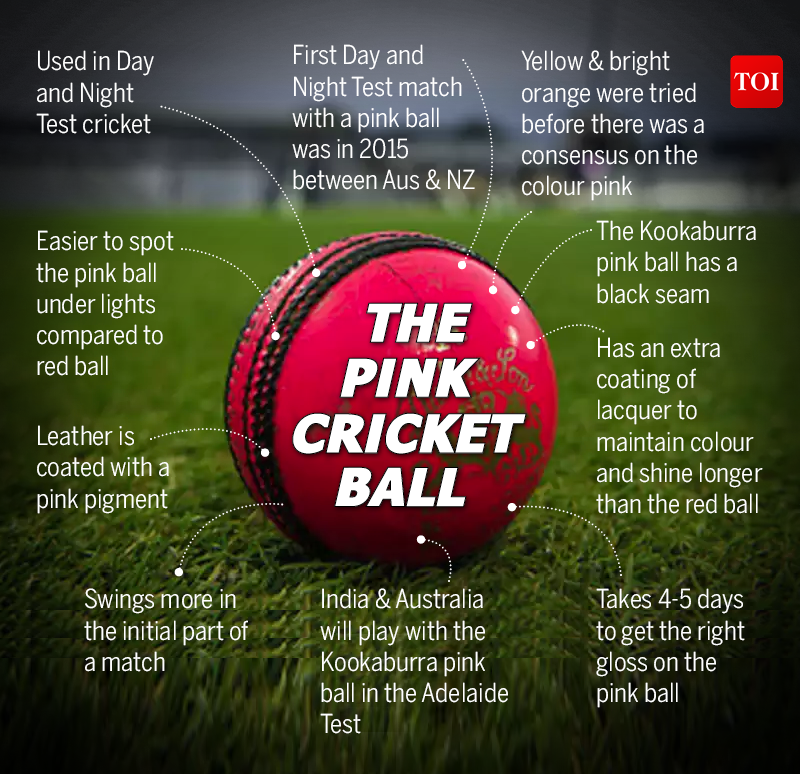
Here’s a quick rundown on the evolution of the pink ball and day and night test cricket:
* The day and night test cricket is played with a pink ball.
* The pink ball was tested in an England vs Australia women’s ODI match in 2009.
* In January 2010 a first-class match was played between Guyana and Trinidad and Tobago with a pink ball in Antigua.
* Other countries also subsequently experimented with the pink ball.
* In 2014 a full round of Sheffield Shield matches was played in Australia with a pink ball made by Kookaburra.

* India experimented with long form cricket day and night as early as 1997. In that year, the Ranji Trophy final between Mumbai and Delhi was played under lights in Gwalior with a white ball. India, however, took day and night test cricket very late. They turned down Australia’s offer to play a day and night event in Adelaide on their 2018-19 tour. They were the ninth nation to play a Test to play a Test with the pink ball under the lights, when they hosted Bangladesh at the Eden Garden last year. India won that match by one inning and 46 runs in three days.
* The first day and night test match was played between Australia and New Zealand in November 2015 in Adelaide. Australia won that match by three wickets on Day 3.
* Kookaburra, which makes cricket balls for all countries except India, England, Ireland and the West Indies, experimented with bright yellow and orange before there was a consensus on the color pink.
* The reason the red ball was not used for the day and night tests is because it was very difficult to pick up the red ball under the lights. It is easier to spot the pink ball under the lights compared to the red ball. Meanwhile, the cue ball was not preferred because it is not strong enough for test cricket.
* The core of all cricket balls (red, white and pink) is the same. For the pink balls, the leather is coated with a pink pigment.
* The pink ball generally tends to sway more in the early part of a match.
* The pink Kookaburra ball has a black stitching. Kookaburra first used a dark green and white stitching. Later they changed it to a black stitching for the pink ball. Steve Smith, who took part in the first day and night test against New Zealand, had said that the stitching had to be more visible. Kookaburra switched to a black stitching in 2016.
* The pink cricket ball has an additional coat of lacquer to keep the color and shine longer than the red ball.
* It takes up to 4-5 days to get the proper glow on the pink ball.
.